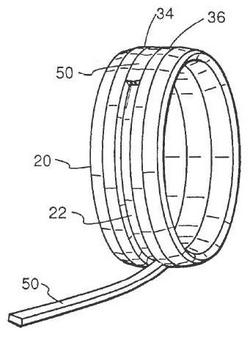In a jewelry patent infringement lawsuit pending at the Federal District Court for the Northern District of California, after oral arguments by each party’s patent attorneys at the Markman hearing, the Court issued its claim construction ruling interpreting the disputed claims of U.S. Patent Nos. 6,928,734 (“the ‘734 patent”), 6,990,736 (“the ‘736 patent”), 7,032,314 (“the ‘314 patent”) and 7,076,972 (“the ‘972 patent”). The patents cover jewelry rings made of tungsten carbide and a method for making such jewelry rings. The ‘736, ‘314, and ‘972 patents are continuations-in-part of unasserted U.S. Patent No. 6,062,045, titled “Wear Resistance Jewelry.”
 The Court set forth the legal standard for claim construction as a question of law to be decided by the Court. Markman v. Westview Instruments, Inc., 52 F.3d 967, 979 (Fed. Cir. 1995), aff’d 517 U.S. 370 (1996). The patentee’s use of a claim term in the specification is highly relevant to understanding the proper context in which the term is used. Phillips v. AWH Corp., 415 F.3d 1303, 1315 (Fed. Cir. 2005). The specification is the “single best guide to the meaning of a disputed term.” Id., citing Vitronics Corp. v. Conceptronic, Inc., 90 F.3d 1576, 1582 (Fed. Cir. 1996).
The Court set forth the legal standard for claim construction as a question of law to be decided by the Court. Markman v. Westview Instruments, Inc., 52 F.3d 967, 979 (Fed. Cir. 1995), aff’d 517 U.S. 370 (1996). The patentee’s use of a claim term in the specification is highly relevant to understanding the proper context in which the term is used. Phillips v. AWH Corp., 415 F.3d 1303, 1315 (Fed. Cir. 2005). The specification is the “single best guide to the meaning of a disputed term.” Id., citing Vitronics Corp. v. Conceptronic, Inc., 90 F.3d 1576, 1582 (Fed. Cir. 1996).
Following these controlling cases in the patent claim construction arena cited above, the Court adopted some of each party’s proposed claim interpretations and, in one instance, the Court adopted a modified combination of each party’s proposed claim construction. The Court’s ruling is available here. The case is titled Trent West v. Jewelry Innovations, Inc., CV07-1812 JF (N.D. Cal. 2007).
Read a jewelry patent lawyer‘s more detailed article on how to protect jewelry through both design patents and utility patents and litigation to enforce them.
 Los Angeles Intellectual Property Trademark Attorney Blog
Los Angeles Intellectual Property Trademark Attorney Blog

